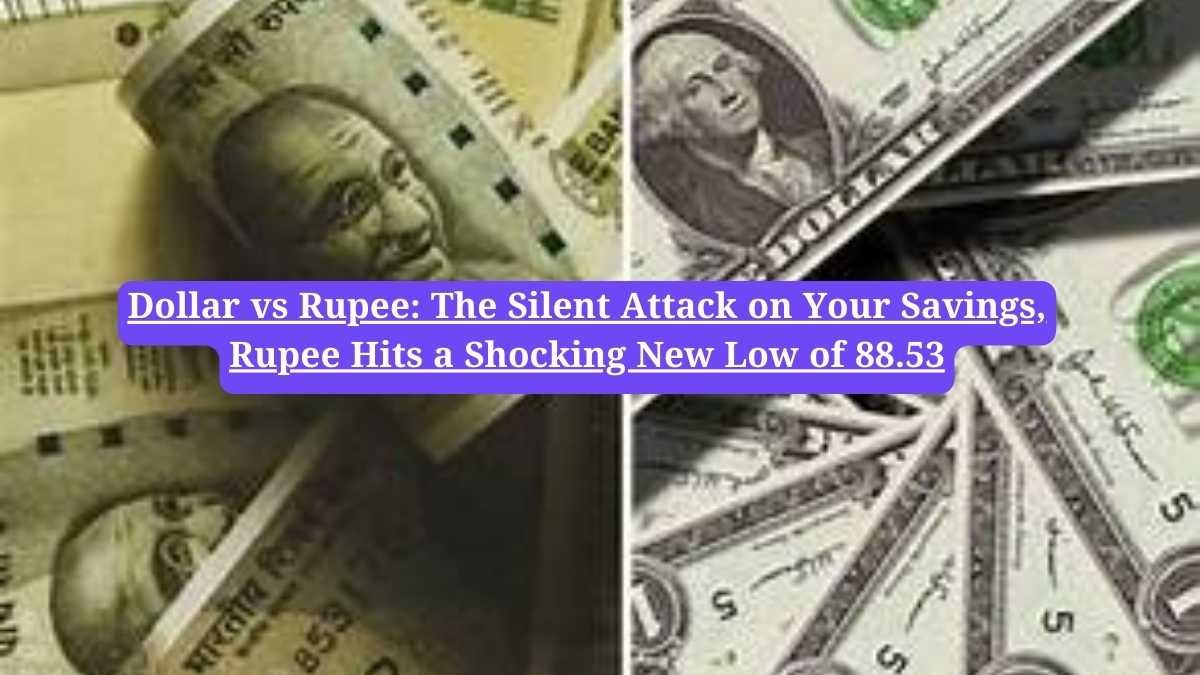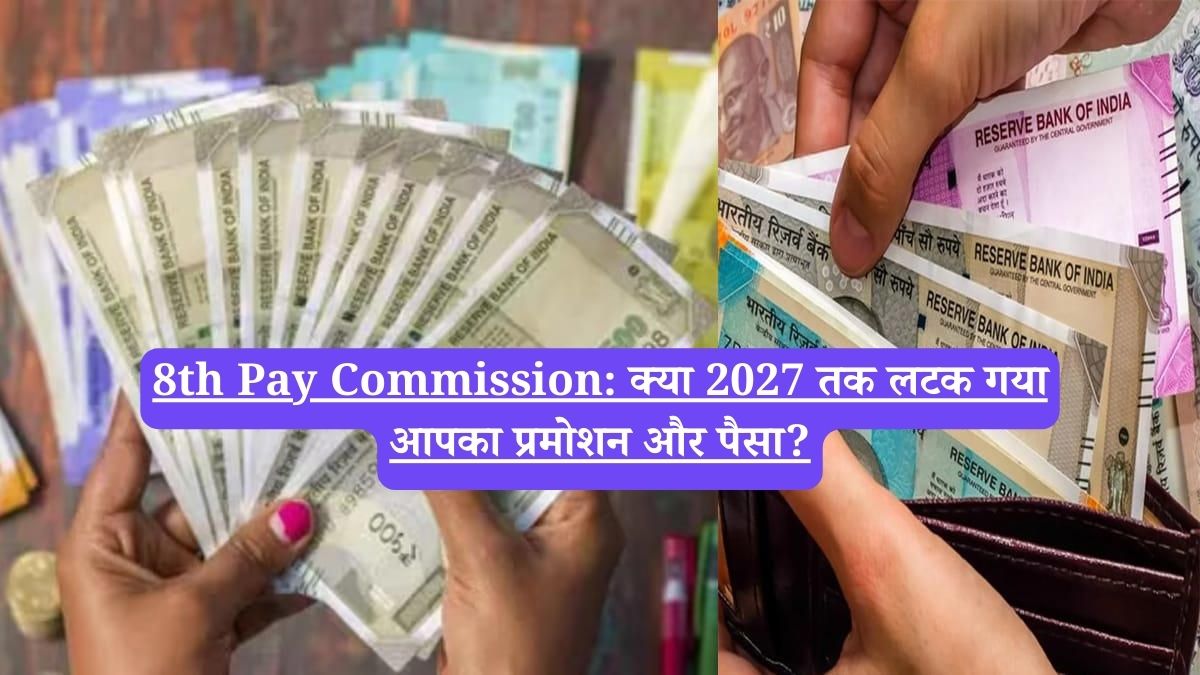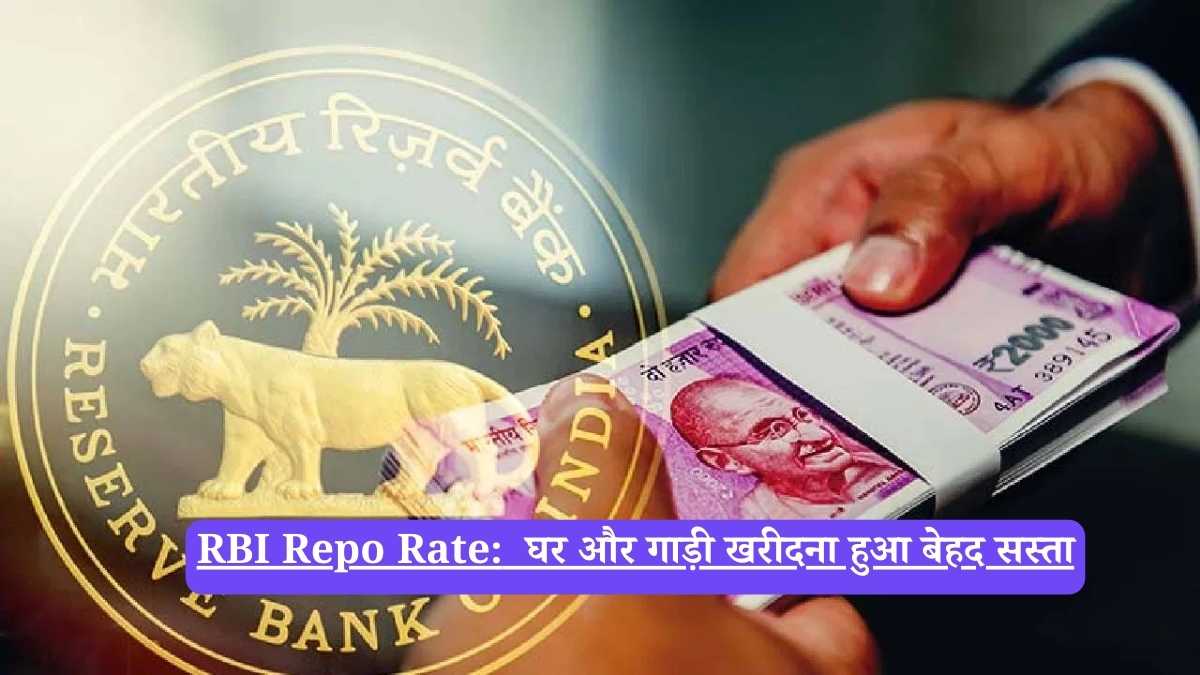Join WhatsApp
Join NowDollar vs Rupee:In a development that spells trouble for household budgets and the broader economy, the Indian Rupee has plunged to its weakest level in history. On Tuesday, amidst a storm of negative global cues and relentless foreign capital outflow, the rupee breached a grim new milestone, tumbling 25 paise to 88.53 against the US dollar in early trade. This historic crash comes on the heels of a 12-paise fall just a day prior, signaling a deepening crisis of confidence.
But this isn’t just a number on a screen; it’s a direct threat to your financial stability. Here’s a deep dive into why the rupee is crumbling and what it means for your daily life.
What is Driving the Rupee’s Unprecedented Fall?
The sharp decline is not the result of a single factor but a perfect storm of domestic and international pressures that are rattling investor sentiment.
- Relentless Foreign Investor Sell-Off: Foreign Institutional Investors (FIIs) have been on a selling spree, pulling significant capital out of the Indian markets. According to the latest data, FIIs sold shares worth a staggering ₹2,910.09 crore on Monday alone. This continuous outflow puts immense downward pressure on the rupee as investors convert their Indian assets back into dollars.
- Adverse US Policies: Experts point to a double whammy of policy changes from the United States. Recent hikes in H1-B visa fees and the looming threat of increased US tariffs have soured the mood among investors, creating uncertainty about the future of trade and services exports, a key source of dollar earnings for India.
- A Stronger US Dollar: Globally, the US dollar remains robust. The Dollar Index, which measures the greenback’s strength against a basket of six major currencies, is trading firmly, making it more expensive to buy dollars with rupees.
A Glimpse at the Market Turmoil
While the currency market was in a state of panic, the domestic stock market painted a surprisingly different picture. The BSE Sensex saw a modest rise of around 100 points, and the NSE Nifty 50 was trading near the 24,250 mark. This divergence was led by a nearly 2% jump in Auto stocks, while IT company shares faced pressure, likely due to concerns that a weaker rupee, while beneficial for earnings, is a symptom of a larger economic malaise.
On the global front, Brent crude oil, a major factor in India’s import bill, offered a sliver of relief, falling 0.62% to $66.16 per barrel. However, this was not enough to counter the overwhelmingly negative sentiment in the forex market.
The Real-World Impact: How a Weak Rupee Hits You Directly
The fall of the rupee from 88.28 to 88.53 might seem small, but its ripple effects are vast and will be felt in every Indian household.
- The Rising Cost of Fuel: This is the most direct and painful consequence. India is one of the world’s largest importers of crude oil. Since oil is purchased in US dollars, a weaker rupee means we have to pay more for the same amount of oil. This will inevitably lead to higher petrol and diesel prices at the pump.
- Your Electronics and Gadgets Will Cost More: Everything from the latest smartphone and laptop to imported appliances and machinery will become more expensive. The components used in “Made in India” electronics are also often imported, meaning their costs will rise too.
- Foreign Dreams Become More Expensive: For students aspiring to study in the US, UK, or other foreign countries, the dream just became significantly more expensive. Your tuition fees and living expenses, when converted from dollars, will now cost much more in rupees. Similarly, planning a foreign vacation will require a bigger budget.
- The Glitter of Gold Gets Pricier: Gold prices are benchmarked in US dollars. As the rupee weakens, the cost of importing and buying gold in India will continue to climb, impacting everything from personal investments to wedding season budgets.
In essence, the rupee’s historic fall is a silent tax on your life, making imports costlier and pushing up inflation. As the currency navigates these turbulent waters, the impact on the common person’s budget is only just beginning.

















